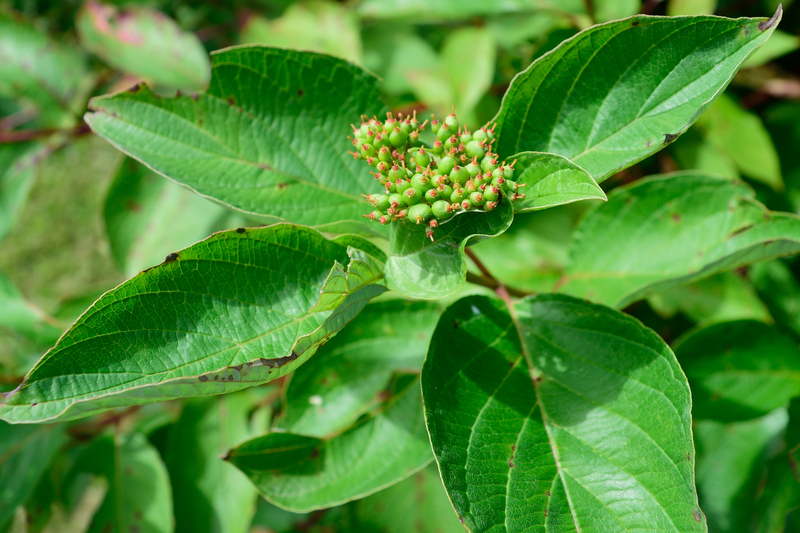Simple Lawn Care Hacks Every New Homeowner Should Know
Congratulations on your new home! One of the first things new homeowners realize is that having a beautiful, green lawn doesn't happen automatically. Fortunately, you don't need to be a landscaping expert to create an inviting yard. With a few simple lawn care hacks and easy-to-follow advice, you'll be well on your way to nurturing a vibrant, healthy lawn you'll be proud of. This comprehensive guide covers the most crucial lawn maintenance tips and straightforward strategies for homeowners of all skill levels.
Lawn Care 101: Understanding Your Lawn's Needs
Before diving into specific maintenance tasks, it's essential to understand what your lawn needs to thrive. Grass may seem simple to care for, but soil quality, local climate, grass type, and maintenance routines can make a significant difference. Focus on these foundation elements:
- Know Your Grass Type: Identify whether you have warm-season or cool-season grass. This influences care routines and the best times for planting or overseeding.
- Test the Soil: A basic soil test can reveal nutrient deficiencies or pH imbalances restricting lawn growth.
- Observe Sunlight Patterns: Some areas may need special grass blends or different watering routines due to sun or shade exposure.
Now that you know what your lawn needs, let's explore easy lawn care tips every homeowner should remember.

Simple Lawn Care Hacks for Quick Results
1. Master the Mowing
- Set the Right Height: Never cut more than one-third of the grass blade at a time. Taller grass shades the soil, prevents weeds, and encourages deeper roots.
- Vary Your Mowing Pattern: Changing your mowing route each time prevents soil compaction and helps the grass grow upright.
- Keep Blades Sharp: Dull mower blades tear grass, making it vulnerable to pests, disease, and brown tips.
2. Smart Watering Techniques
- Water Early in the Morning: This minimizes evaporation and reduces the risk of mold or mildew.
- Deep and Infrequent is Key: Soak the soil several inches down to promote strong roots rather than frequent, shallow watering.
- Use a Rain Gauge: Lawns need about 1 inch of water per week, including rainfall. Avoid water waste by tracking what nature provides.
3. Practice Proper Feeding
- Fertilize at the Right Time: Early spring and fall are ideal for most grass types, but adjust based on your location and turf.
- Use Natural Fertilizers: Compost, grass clippings, and organic fertilizers are better for the environment and your soil.
- Read the Label: Avoid over-fertilizing to prevent burning your lawn and harming local waterways.
4. Weed Control Essentials
- Pull Weeds When Small: Eliminate weeds early before they set seeds and spread.
- Mulch and Overseed: Thick, healthy lawns crowd out weeds naturally. Mulch bare patches to suppress weed growth and encourage grass germination.
- Spot-Treat Problem Areas: Use herbicides sparingly and only where needed for trouble spots.
5. Aerate and Overseed for a Thicker Lawn
- Aerate Annually: Aeration relieves soil compaction, improves drainage, and allows nutrients to reach deep roots.
- Overseed After Aerating: Spreading grass seed over your existing lawn fills in gaps, improves density, and boosts curb appeal.
- Choose High-Quality Seed: Not all grass seeds are equal! Select varieties suited for your region and yard conditions.
Year-Round Lawn Care Tips for New Homeowners
A great lawn isn't built overnight, but a consistent routine ensures the best results. Here's how to simplify lawn care throughout the seasons:
Spring
- Rake and Remove Debris: Clear sticks, leaves, and winter debris to give new growth a head start.
- Aerate and Fertilize: Loosen the soil and apply early fertilizer for strong spring growth.
- Seed Bare Spots: Patch winter-damaged areas by overseeding early in the season.
Summer
- Water Wisely: Adjust your watering schedule based on heat and rainfall. Early morning remains best!
- Sharpen Mower Blades Often: Cutting more often with sharp blades reduces stress for your lawn during hot weather.
- Let Grass Clippings Lie: Grasscycling returns nutrients to your soil and reduces waste.
Fall
- Feed for Winter: Apply fertilizer to build root reserves for winter dormancy.
- Aerate and Overseed: Fall is the optimal time to relieve compaction and fill in thin areas.
- Remove Leaves Promptly: Don't let a thick layer of leaves suffocate your lawn.
Winter
- Limit Foot Traffic: Frozen, dormant grass is vulnerable. Stay off the lawn when possible.
- Clean Equipment: Store mowers and trimmers properly--clean and sharpen for a strong start next spring.
- Plan Next Year's Projects: Research landscaping improvements, mulch types, or irrigation systems to implement later.
Common Lawn Care Mistakes New Homeowners Make
Even with the best backyard care tips, avoiding common pitfalls is just as important. Here's what not to do:
- Overwatering: More isn't better. Excessive watering leads to shallow roots and fungal problems.
- Improper Fertilization: Guessing at fertilizer type or quantity can burn your lawn or pollute the environment.
- Neglecting the Basics: Skipping regular mowing, watering, or weed removal causes bigger problems later.
- Wrong Timing: Mowing during drought or fertilizing at the wrong time can stress your turf.
- Ignoring Soil Health: All the mowing and watering in the world can't fix unhealthy soil.
Budget-Friendly Lawn Care Solutions
Great lawn maintenance doesn't have to break the bank. There are plenty of budget-wise ways to keep your yard looking lush:
- Mulch Grass Clippings: Saves on disposal costs and fertilizer.
- Compost at Home: Use your food scraps and yard waste for natural fertilizer.
- Share Equipment: Team up with neighbors to split the cost of big lawn tools like aerators or dethatchers.
- DIY Sprinkler Systems: Simple soaker hoses or inexpensive timers give lawns a boost without professional installation.
- Select Low-Maintenance Grasses: Native or drought-resistant species mean less watering and fertilizer needed.
Beginner-Friendly Tools Every Homeowner Should Have
You don't need every gadget out there to succeed at lawn care for beginners. Just a few reliable tools can handle nearly every task:
- Quality Lawn Mower: Choose one that fits your yard size and storage space requirements.
- String Trimmer: For edging along fences, walkways, and garden beds.
- Garden Rake: Ideal for collecting leaves and debris or helping seed new grass.
- Spreader: For even application of seed, fertilizer, or lime.
- Aerator: Rent or purchase a manual tool each fall to keep your soil loose and healthy.
- Watering Can or Hose with Sprayer: Target dry spots without overwatering the whole lawn.
Sustainable Lawn Care: Go Green, Save Green!
Today, more homeowners want a healthy lawn that's also eco-friendly. Here are green lawn care hacks worth considering:
- Reduce Chemical Use: Choose organic fertilizers and natural weed control methods to protect local pollinators and waterways.
- Install Rain Barrels: Capture rainwater for free, sustainable irrigation.
- Plant Clover: Modern clover blends stay green with less mowing and fertilizing, plus they attract bees!
- Choose Drought-Tolerant Grasses: Save water while still enjoying a lush look.
- Minimize Lawn Area: Convert part of your yard to flower beds, shrubs, or native plantings for less mowing and more biodiversity.
Frequently Asked Questions About Simple Lawn Care for New Homeowners
How often should I water my lawn?
*Deeply* water your lawn once or twice per week. Your goal is to ensure moisture reaches about 6 inches into the soil. Adjust for local rainfall and temperature.
When is the best time to mow?
Mow during the late morning or early evening, when grass is dry but not exposed to midday heat. Avoid mowing wet or dew-covered grass as this leads to uneven cuts and disease.
What is the easiest way to get rid of weeds?
Focus on prevention! Keep your grass healthy and thick so weeds have less space to grow. Spot-treat visible weeds early, and overseed to fill bare patches where weeds might take hold.
Can I grow a great lawn without chemical fertilizers?
Absolutely! Use compost or organic fertilizers, mow high, water wisely, and regularly overseed. Healthy soil and thick grass are your best defense against weeds and disease.

Final Thoughts: Your Lawn Care Journey Starts Now
Creating a beautiful yard doesn't mean hours of work each weekend or a huge investment. With these simple lawn care hacks for new homeowners, you'll quickly learn how to keep your grass green, healthy, and inviting. Remember: consistency, smart techniques, and a little attention go a long way.
Ready to get started? Grab your mower, test your soil, and enjoy the journey--your perfect lawn awaits!
Key Takeaways: Simple Lawn Care Hacks for Busy Homeowners
- Understand your lawn's unique needs before you begin care routines.
- Mow high and often, keeping blades sharp for a healthy cut.
- Water deeply and infrequently for stronger roots and a greener lawn.
- Natural solutions like compost and mulch deliver great results--with less impact on your wallet and the planet.
- Avoid common lawn care mistakes by sticking to a simple, seasonal schedule.
With these simple lawn care tips for new homeowners, a lush green yard is within your reach. Enjoy your new home--and your beautiful lawn!